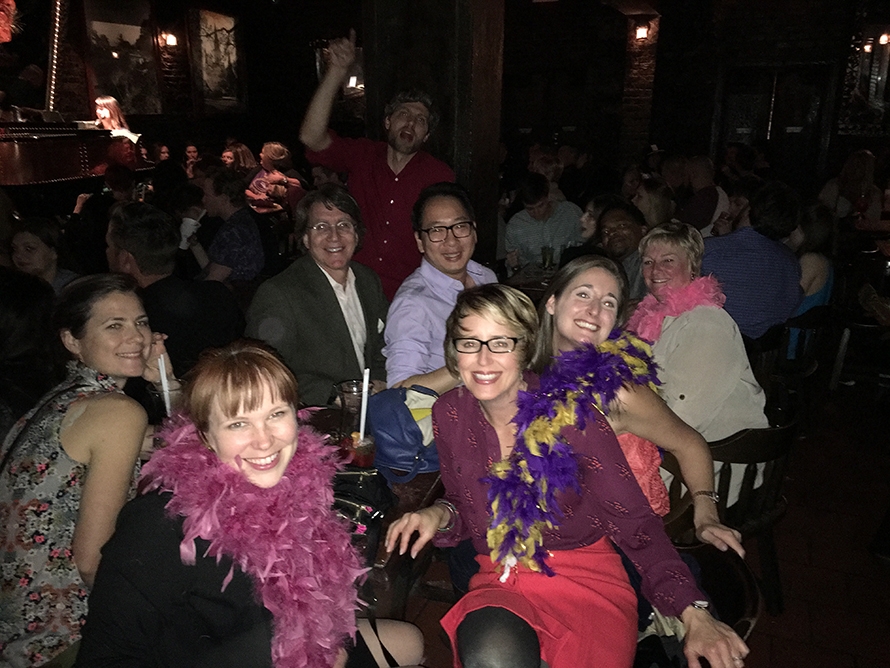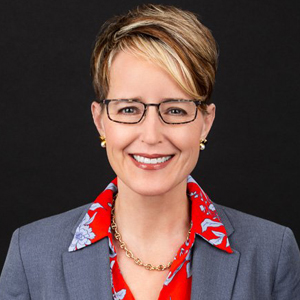
Saying yes to a community of communicators
“Be careful what you wish for, lest it come true.”
This old saying perfectly sums up the path that took me from “ASBMB member” to “ASBMB member who actually engages deeply with, and cares about, the ASBMB.”*
I am an immunologist by training, and I joined the American Society for Biochemistry and Molecular Biology as an assistant professor when my lab’s research took a turn to study signaling cascades and post-translational modifications involved in regulating immune responses to cancer.
I encouraged my trainees to join the ASBMB, attend the annual meeting and give talks (I’ve always thought the ASBMB provided the best career development opportunities for young scientists), but I rarely attended the meeting myself. I was too busy being a mom and a professor and starting my own company to attend many conferences — especially one where I thought (incorrectly) I would not find folks who shared my interests.
One such interest was science communication. My mom was an English teacher, and I debated competitively in high school and college. I have always loved the flexibility of the English language to explain even the most mundane activities in lovely and exacting prose. As a graduate student, I learned science writing. As a postdoc, I honed my skills in scientific presentation. As a faculty member, I saw those two skills sets marry into an ability to quickly understand, summarize and share exciting science in ways nonscientific communities could grasp.
The trainees in my lab were well versed in science communication and presented not only their research but also anyone else’s in the lab with confidence. I elevated science communication in the courses I taught and expected Ph.D. students who invited me to serve on their committees to sharpen their science communication skills under my tutelage. I started a science communications consulting firm, and faculty members, universities and nonprofits hired us, embracing my mantra: “Any topic can be shared with, and understood by, any audience if the presenter is willing to work for it.”
What I was missing in all this activity was fellowship in a like-minded community of those who considered science communication to be an art.
About a decade ago, I had one foot out the door of a Federation of American Societies for Experimental Biology science policy and advocacy reception when I found myself hunted like a turkey at Thanksgiving by none other than Tom Baldwin — a professor at the University of California, Riverside, outstanding biochemist and active ASBMB member. So active that, seeing the need for the society to expand its offerings in science outreach, he recently had formed the Public Outreach Committee (now the Science Outreach and Communication Committee).
Tom had learned from someone in the crowd of my bent toward all things science communication, and before I knew it, I was a member of his committee. About 30 seconds after that, I was chair of the not-yet-existent subcommittee formed to tackle science communication. Like it or not, I had found my people.
Two years later, our fledgling committee had ideated, developed, launched and taught the Art of Science Communication, a premier skills course still offered (in a beautifully evolved format) by the ASBMB.
Becoming involved in the ASBMB, spending time with the incredible members of the committee, learning from them and collaborating with them all felt like coming home after a long, lonely journey. Throughout my career, I’ve interacted with many hundreds of outstanding scientists, and I have learned from each of them, but never have I equaled the return on investment of time and energy in human interactions that I have received from service to the ASBMB. I have learned that many scientists care about science communication and science outreach just as much as I do, and I have been able to learn their techniques, hear their stories and grow exponentially in my own abilities.
Once I care about something, it’s easier to say yes to volunteering, no matter how busy I am.
I want future generations to benefit from the ASBMB just as much as I have, so when I was asked to join the Finance Committee, my answer was a quick yes — no turkey hunt–type stalking needed to rope me in. A year later, when nominated for the ASBMB Council, I was honored, and another quick yes followed. If and when the ASBMB asks again, my answer will always be yes.
In a time when so much divides us, we are lucky to come together within and through the ASBMB and engage in the things we love — to share and receive and share again the beautiful biochemistry that makes our world, and ourselves, tick. I always will identify as an immunologist, but nowhere else have I been able to bring all of me to the table of science.
Perhaps I’m a biochemist at heart, or maybe I’m just good at understanding and sharing why and how biochemistry touches everything we do. Regardless, I encourage you to find your community in the ASBMB. You will not regret it, and you likely will get much more back than you give.
*I was about to type that there should be a shorter name for this. It turns out there is: ASBMB fellow.

Other Fellow articles
Paul Criag: People in the ASBMB have changed my life
Nathan Vanderford: Investing in the next generation
Alex Toker: An unpredictable journey
Ralph A. Bradshaw: The ASBMB and me
Enjoy reading ASBMB Today?
Become a member to receive the print edition four times a year and the digital edition monthly.
Learn moreFeatured jobs
from the ASBMB career center
Get the latest from ASBMB Today
Enter your email address, and we’ll send you a weekly email with recent articles, interviews and more.
Latest in Opinions
Opinions highlights or most popular articles

Sketching, scribbling and scicomm
Graduate student Ari Paiz describes how her love of science and art blend to make her an effective science communicator.

Embrace your neurodivergence and flourish in college
This guide offers practical advice on setting yourself up for success — learn how to leverage campus resources, work with professors and embrace your strengths.

Survival tools for a neurodivergent brain in academia
Working in academia is hard, and being neurodivergent makes it harder. Here are a few tools that may help, from a Ph.D. student with ADHD.

Hidden strengths of an autistic scientist
Navigating the world of scientific research as an autistic scientist comes with unique challenges —microaggressions, communication hurdles and the constant pressure to conform to social norms, postbaccalaureate student Taylor Stolberg writes.

Black excellence in biotech: Shaping the future of an industry
This Black History Month, we highlight the impact of DEI initiatives, trailblazing scientists and industry leaders working to create a more inclusive and scientific community. Discover how you can be part of the movement.

Attend ASBMB’s career and education fair
Attending the ASBMB career and education fair is a great way to explore new opportunities, make valuable connections and gain insights into potential career paths.

